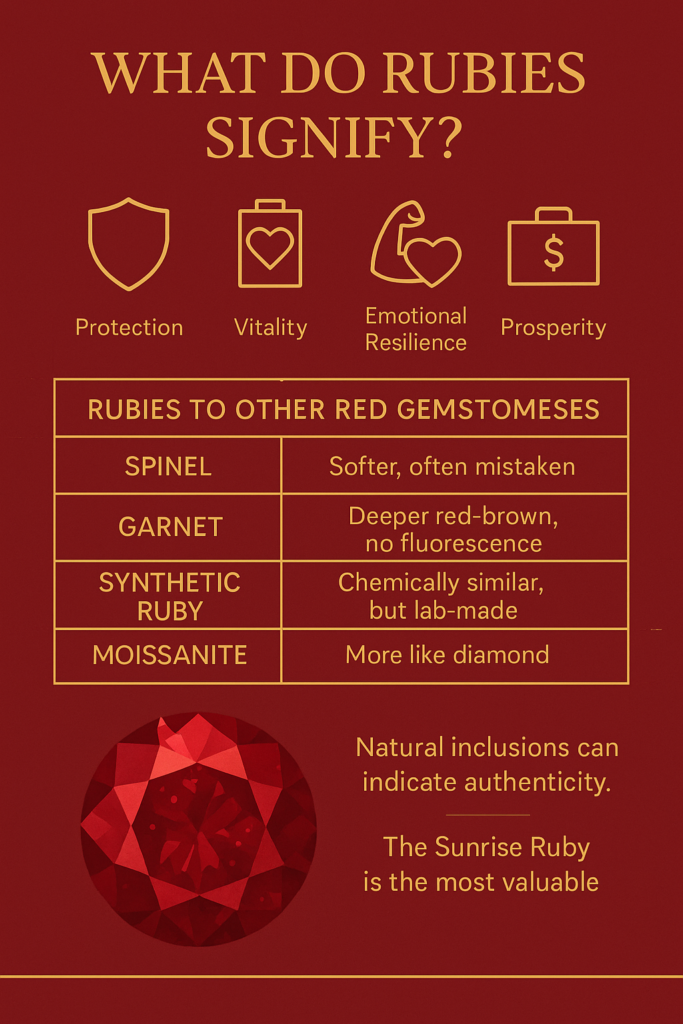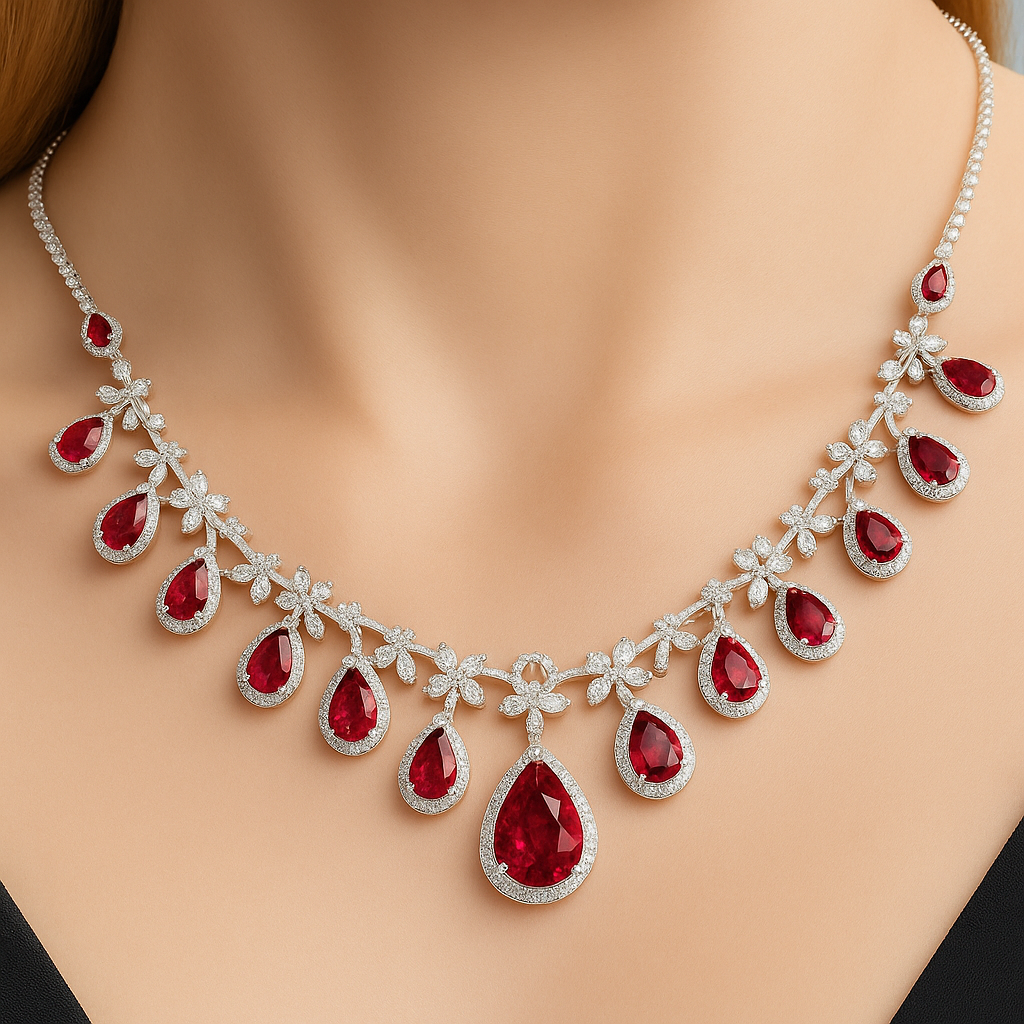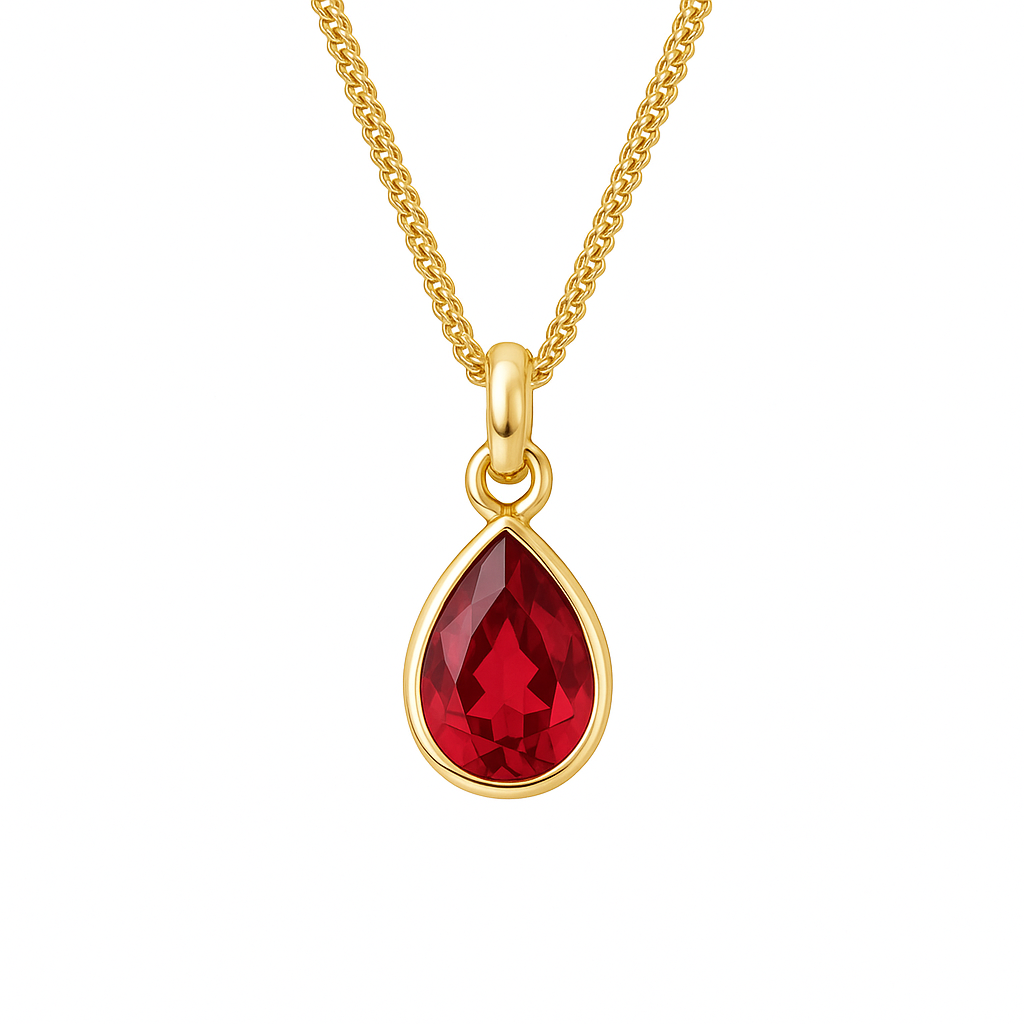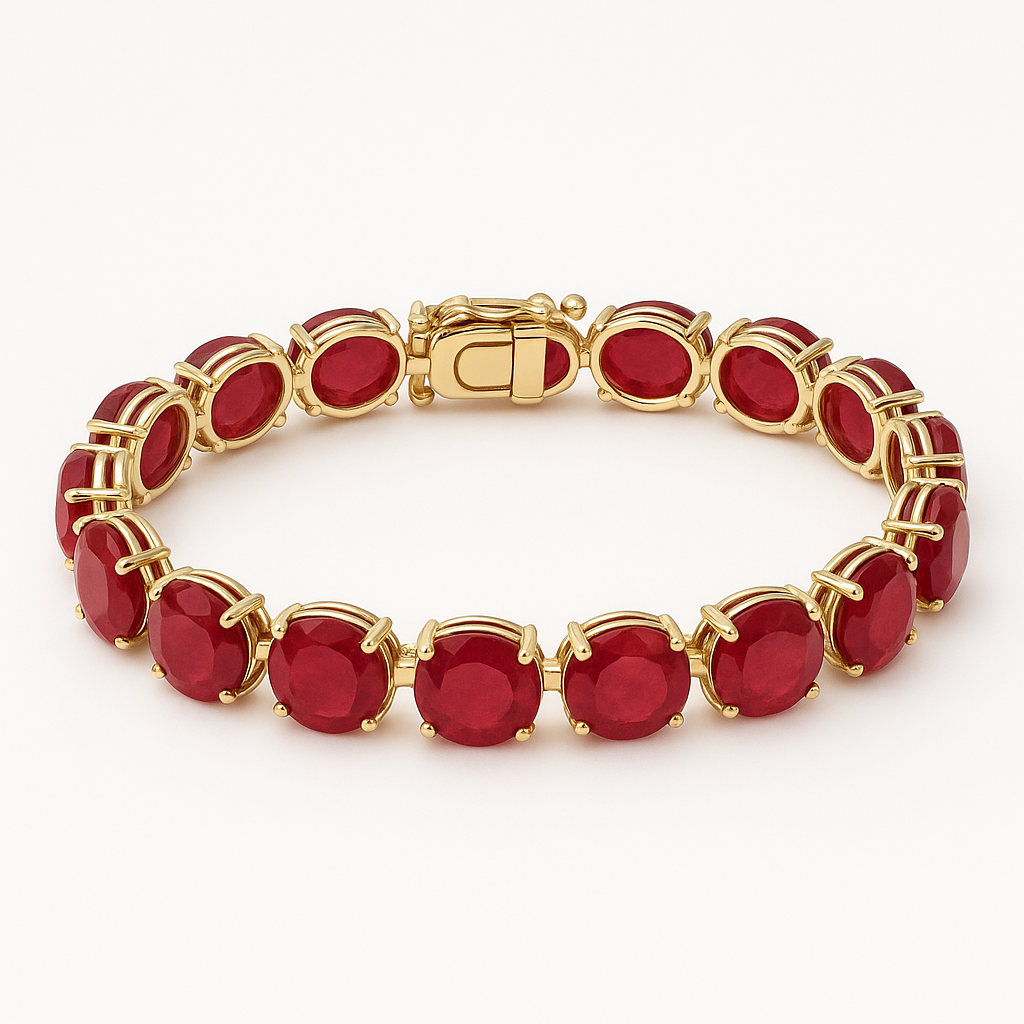Ruby is known for its vibrant red color and status as one of the most popular precious gemstones. It is a red gemstone from the corundum family, colored by the presence of chromium.
With a Mohs hardness of 9, it is second only to diamond among natural gems. Ancient Burmese warriors believed rubies granted invincibility. Today, rubies are used in fine jewelry and spiritual practices alike. The gem is associated with prosperity, love, and divine power. This post will unpack the ruby’s meaning—its symbolism, spiritual uses, and significance as a birthstone and protective talisman.
Rubies Meaning: What Makes This Gem So Special?
Rubies have held the fascination of royalty, gemologists, and collectors for centuries. As a variety of the mineral corundum, ruby gemstones stand out not only for their vivid red hue but also for what they represent symbolically and culturally.
Whether it’s their durability, rarity, or spiritual associations, rubies hold a distinct place among precious stones. In this section, I’ll explore the different angles from which we can understand the spiritual meaning of ruby—through symbolism, cultural heritage, and gemological context.
Meaning of Ruby in History and Culture
Throughout history, rubies have been viewed as prized possessions by monarchs, warriors, and spiritual leaders. Ancient Burmese warriors believed rubies made them invincible in battle. In India, rubies were called ratnaraj—the king of precious stones. These beliefs weren’t just symbolic; they influenced trade, status, and even conflict over ruby mines like those in Mogok, Myanmar, home to some of the most significant ruby deposits.
In my experience working with antique jewelry, historical ruby pieces often show cabochon cuts and rich inclusions, which we now recognize as natural fingerprints of origin—especially in untreated Burmese rubies. While inclusions in diamonds reduce value, ruby inclusions can add character and identity, sometimes producing a soft fluorescence under ultraviolet light.
Here’s a breakdown of notable cultural associations:
| Region | Historical Use | Modern Relevance |
|---|---|---|
| Burma (Myanmar) | Symbol of power and leadership | Source of top-grade rubies (e.g., Mogok) |
| India | Spiritual and ceremonial use | Hindu belief in protective powers |
| Europe | Nobility and armor decoration | Vintage ruby jewelry, collectibles |
As a birthstone for July, the ruby continues to hold cultural weight. It’s often gifted for 40th wedding anniversaries—a nod to its longevity and emotional resonance.
What Do Ruby Symbolize?
Ruby gemstones are traditionally symbols of power, wealth, vitality, and passion. The intense, blood-red color—produced by the presence of chromium in the ruby crystal—has always been associated with the very essence of life. I often notice that ruby-set pieces, especially when paired with diamonds in fine jewelry, create an impression of strength and sophistication, enhancing the ruby’s natural symbolism.
Here’s a table summarizing key symbolic associations of rubies:
| Symbolic Theme | Meaning Behind the Ruby |
|---|---|
| Power and Wealth | Historically worn by royalty and elites |
| Vitality | Connected to blood and life energy |
| Love and Passion | Favored in romantic and wedding jewelry |
| Protection | Believed to ward off evil and misfortune |
| Courage and Strength | Worn by warriors and leaders |
Ruby is the birthstone for July, and many traditions say it brings good fortune to those born under its sign. Ancient sayings, including Hindu and European proverbs, often mentioned rubies as talismans of prosperity and divine favor.
What Do Rubies Signify?

Rubies signify a blend of spiritual vitality, protection, and enduring love. In gemology, ruby is classified as a gem species belonging to corundum, but its meaning transcends scientific classification. I’ve often advised clients that when they choose a ruby stone—whether a 2-ctw pendant or a ruby and diamond ring—they are investing not just in beauty but also in personal symbolism.
Rubies may:
- Protect the wearer from harm and negative energy
- Boost vitality and passion for life
- Strengthen emotional resilience
- Attract prosperity and professional success
Here’s a comparison between ruby and other red stones often confused with it:
| Gemstone | Key Differences with Ruby |
|---|---|
| Spinel | Softer; often mistaken for ruby in old jewels |
| Garnet | Deeper red-brown hues; lacks ruby’s fluorescence |
| Synthetic Rubies | Chemically similar but lack natural provenance |
| Moissanite | Simulates diamond more than ruby |
Rubies include internal features like inclusions and possible fractures, but instead of being flaws, these elements often authenticate their natural origin. The International Gem Society values untreated rubies—especially those from Sunrise Ruby-level quality—for their rarity and significance.
Ruby in Jewelry and Popular Use
Rubies have always stood out in the world of precious gemstones, not only for their breathtaking beauty but also for their enduring symbolism and practical appeal.
Throughout my experience working with ruby jewelry—from antique collections to modern designs—I’ve seen how this gem manages to combine luxury, strength, and personal significance like few others.
What Are Rubies Used For?
Rubies are primarily used in fine jewelry, including rings, necklaces, bracelets, earrings, and brooches. Due to their exceptional hardness, ruby gemstones are highly durable, making them ideal for daily wear, especially in rings and bracelets that endure frequent contact.
Rubies are featured prominently in:
- Engagement and wedding rings (alternative to diamonds)
- 40th wedding anniversary gifts (a major tradition)
- Protective talismans and amulets in different cultures
- High-value collectibles and royal regalia
Interestingly, the combination of ruby and diamond in one piece often symbolizes a balance between passion (ruby) and purity (diamond). In the gemology world, untreated rubies from renowned locations like Mogok or Sunrise Ruby-level specimens command exceptional prices, sometimes surpassing even diamonds per carat.
What Does Ruby Signify in Jewelry?
In jewelry, rubies signify much more than beauty—they are emblems of inner strength, enduring love, and passionate living. A ruby-set piece instantly conveys a message of boldness and luxury, often worn by those who aren’t afraid to make a statement.
Throughout history, rubies have been favored over other red stones like garnet or spinel because of their unparalleled luster and resilience. Even today, collectors and jewelers distinguish natural ruby gemstones by their superior vibrancy and fluorescence under ultraviolet light.
Red Ruby Ring Meaning

- Symbol of Passion and Love: Represents deep emotional connection and fiery romance.
- Alternative to Traditional Rings: Popular choice for engagement or anniversary rings.
- Protective Qualities: Historically worn to guard against negativity and misfortune.
- Chakra Association: Stimulates the heart chakra, encouraging emotional strength.
- Statement of Confidence: Reflects the wearer’s boldness and personal power.
Ruby Necklace Meaning

- Powerful Heart Symbolism: Worn close to the heart, symbolizes vitality and love.
- Royal Heritage: Associated with nobility, leadership, and inner strength.
- Energy Amplification: Enhances emotional clarity and personal magnetism.
- Elegant Presence: Adds sophistication while conveying depth and meaning.
- Personal Empowerment: Ideal for those who lead with passion and purpose.
Ruby Pendant Meaning

- Focused Energy: Directs ruby’s power to the heart or throat center.
- Voice and Expression: Encourages authentic communication and confidence.
- Minimalist and Meaningful: Combines simplicity with deep spiritual resonance.
- Milestone Gift: Commonly gifted to mark personal growth or transformation.
- Daily Talisman: Acts as a constant reminder of strength and purpose.
Ruby Bracelet Meaning

- Symbol of Action and Strength: Encourages proactive living and determination.
- Energy in Motion: Channels vitality through the arms and hands.
- Motivational Accessory: Inspires resilience during life’s challenges.
- Stylish and Empowering: Offers both aesthetic appeal and personal meaning.
- Expression of Bold Living: Perfect for individuals embracing authenticity.



Leave a Reply